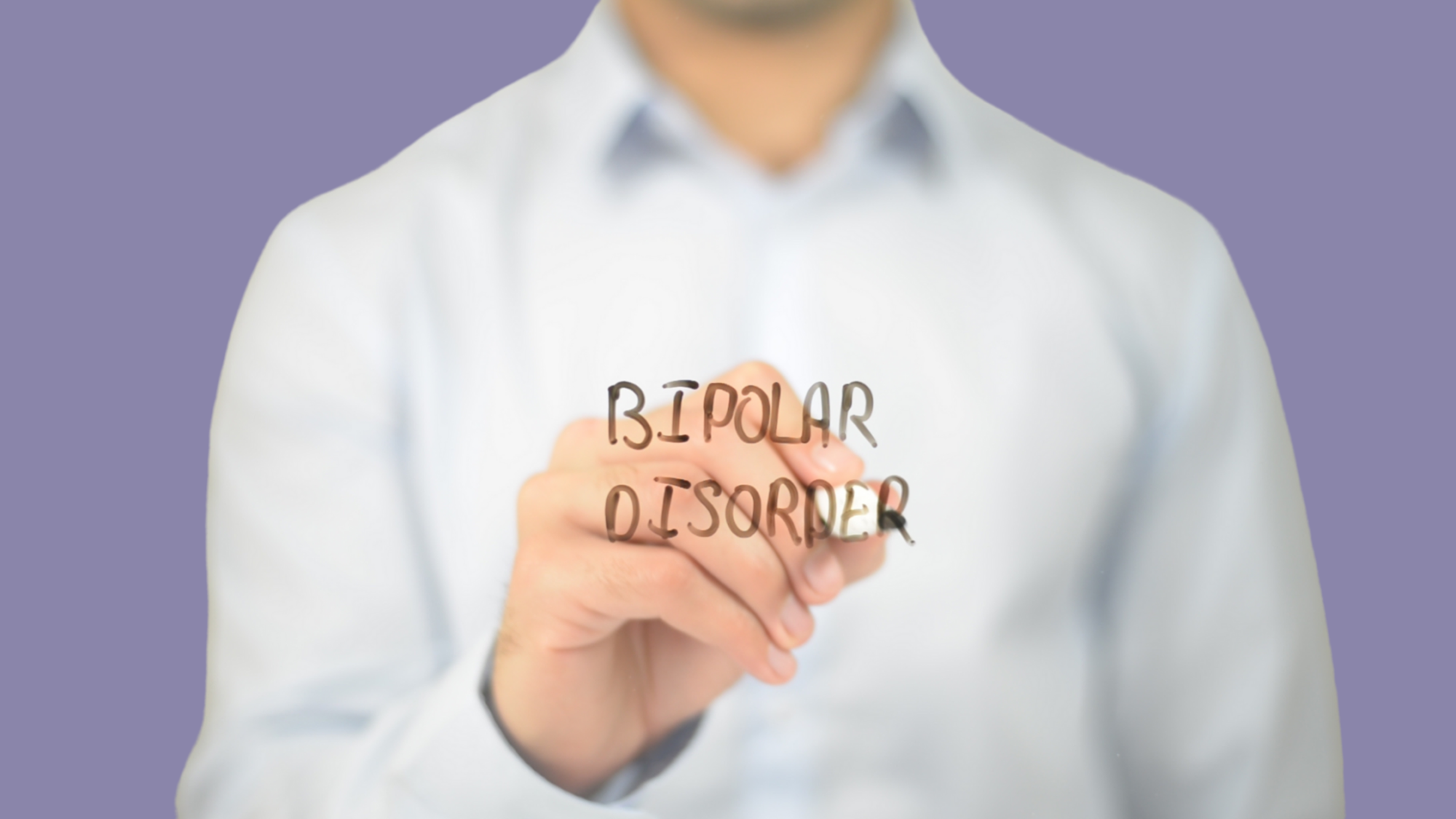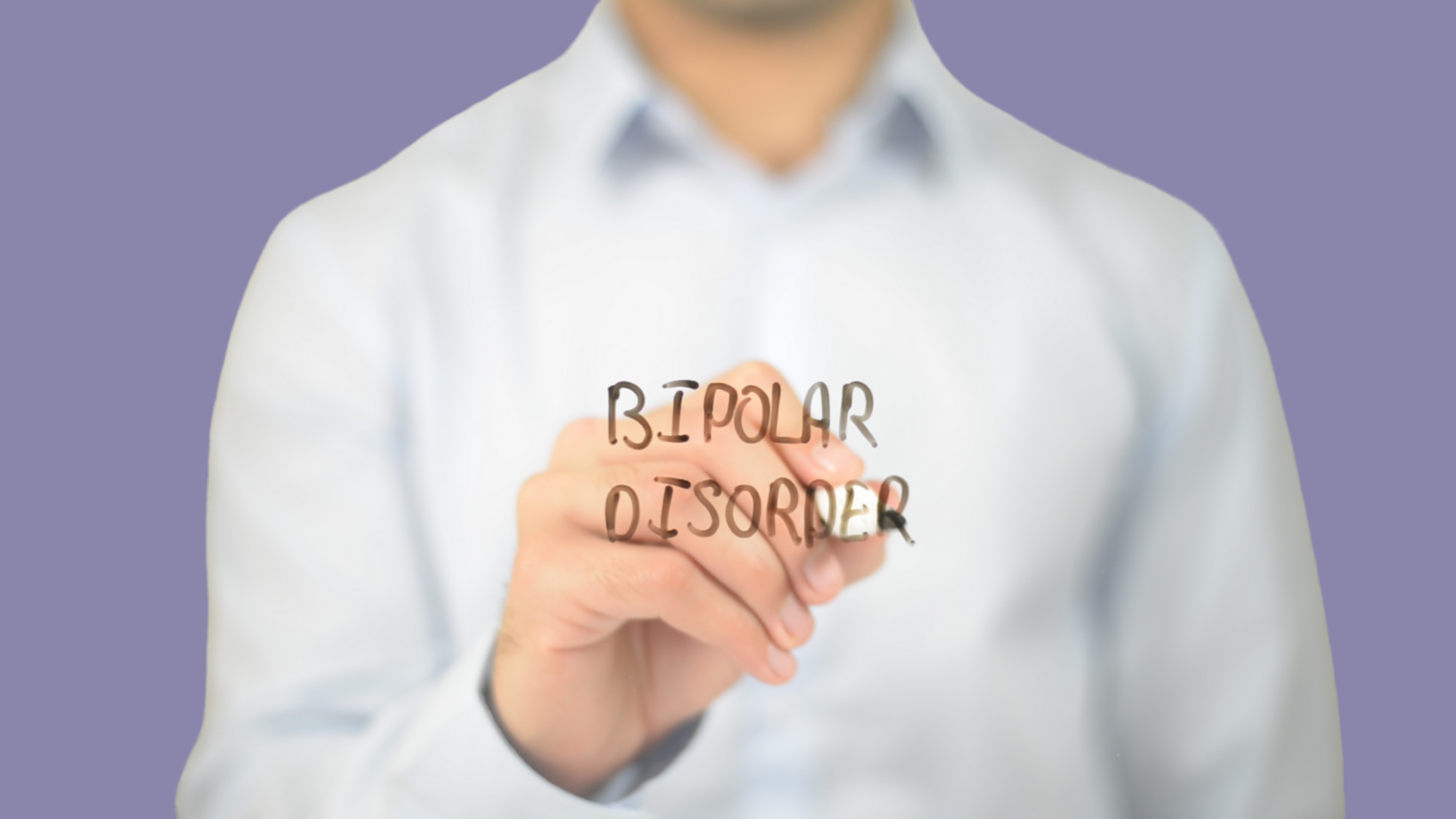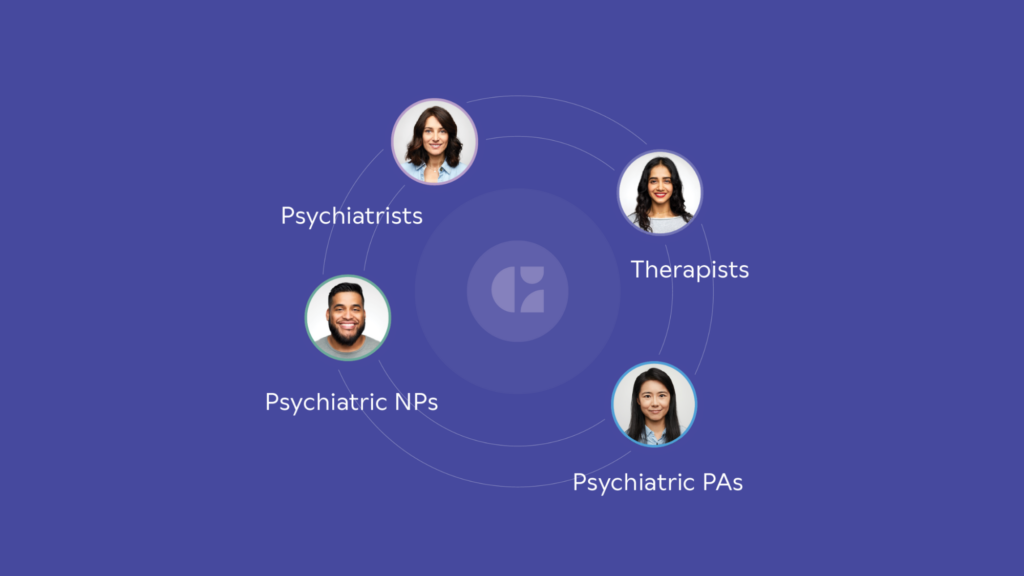
Bipolar disorder is a complex mental health condition that affects millions of people worldwide, impacting their mood, energy levels, and ability to function on a day-to-day basis. According to the National Institute of Mental Health (NIMH), 4.4 % of adults experience bipolar disorder at some point in their lives, with onset typically occurring during late adolescence or early adulthood.
At Geode Health, we believe that self-awareness plays a pivotal role in managing bipolar disorder effectively. This blog explores the importance of self-awareness in the management of bipolar disorder and offers insights into what patients wish they had known sooner in their journeys toward better mental health.

Bipolar Disorder 101: A Basic Overview
Bipolar disorder is characterized by recurrent episodes of mania, hypomania, depression, or mixed episodes. These episodes can be severe, affecting relationships, work performance, and overall quality of life. According to the APA, bipolar disorder is divided into two main types: Bipolar I and Bipolar II, with Bipolar I involving more severe manic episodes and Bipolar II involving milder “hypomanic” symptoms. In both conditions there can be significant depressive episodes.
Despite its prevalence, recognizing the signs and symptoms of bipolar disorder early on can be challenging. Many patients struggle to understand their moods, making it difficult to distinguish between a temporary emotional reaction and a more severe mood shift.
Identifying Symptoms: How Long Before the Signs Are Clear?
One of the most challenging aspects of bipolar disorder is that the symptoms often go unnoticed or misinterpreted for a significant period. According to the National Institutes of Health (NIH), it can take several years for individuals to receive an accurate diagnosis of bipolar disorder, with symptoms being present long before an individual or their loved ones recognize them as a problem.
For many, it is not until the symptoms interfere significantly with daily life—affecting work, relationships, or personal health—that the realization occurs that something is wrong.
Puberty and Hormonal Shifts: A Complicating Factor in Early Diagnosis
Puberty, which is a time of significant hormonal and emotional change, is often when bipolar disorder first presents, making the symptoms harder to distinguish from expected adolescent behavior. The mood swings, irritability, and impulsivity that come with puberty can mirror the early signs of bipolar disorder. This overlap often leads to a delay in diagnosis, as these symptoms may be written off as part of normal adolescence rather than indicators of a deeper issue.
Additionally, hormonal shifts—especially in females—can exacerbate mood fluctuations, further complicating the picture. Research has shown that women are more likely to experience bipolar disorder onset during their teens or early twenties, and hormonal changes during menstruation or pregnancy can sometimes trigger or worsen episodes. The complexity of recognizing bipolar disorder symptoms during puberty, combined with the fluctuating nature of hormones, makes it even more challenging for both individuals and their families to connect the dots.
“Increased irritability or elevated mood, speaking more rapidly, getting less sleep without feeling tired, heightened impulsivity and risk-taking behavior, or unusual social inhibition may indicate hypomania rather than being explained by puberty,” explains Dr. John M. Bouras, Outpatient Psychiatrist at Geode Health in Texas. “Many teens may turn to substances to self-medicate, which complicates the situation further.”
Denial and the Acceptance Phase
The first stage of self-awareness often involves coming to terms with the disorder, which can be a challenging process. This phase is marked by denial or reluctance to accept that mood swings are a symptom of a mental health condition rather than just part of life. Many individuals may attribute their feelings to external factors such as stress, lifestyle choices, or even personality traits, especially during the initial stages.
Dr. Bouras explains, “Unfortunately, due to stigma, teens may often minimize signs pointing to a mental health diagnosis and are more likely to accept a more socially acceptable label, such as attention-deficit/hyperactivity disorder (ADHD).”
In some cases, loved ones may also struggle to acknowledge the severity of the situation. They may interpret symptoms such as irritability, extreme energy, or withdrawal as temporary rather than as part of a recurring mental health condition. This delay in recognition is often exacerbated by stigma, misinformation, and a lack of understanding about mental health.
Dr. Pedro Dago, Outpatient Psychiatrist and Medical Director at Geode Health in Chicago, adds, “When sharing their concerns, significant others should be sensitive to feelings of shame on the part of their loved one and present their concerns in a non-judgmental manner.”
How Gender May Shape Self-Awareness in Bipolar Disorder
Bipolar disorder does not present the same way in everyone, and gender plays a significant role in how symptoms manifest. While both men and women can experience the highs (mania) and lows (depression) of bipolar disorder, research suggests that these experiences may differ in several ways.
Onset Age and Course
Bipolar disorder typically manifests earlier in males, often during late adolescence, while females may experience the first episodes later, typically in their twenties or even early thirties. Women are more likely to suffer from bipolar II and rapid cycling (defined as experiencing four or more mood episodes within a year.)
Symptom Presentation
Men with bipolar disorder often experience more intense manic episodes, with pronounced impulsivity, irritability, and risk-taking behaviors. These manic symptoms are more likely to be recognized as problematic early on. However, women are more likely to experience mixed episodes—where depressive symptoms occur alongside manic symptoms—or more frequent depressive episodes. This can make self-awareness and diagnosis more challenging, as symptoms may be misunderstood or overlooked. Women are also more likely to experience rapid cycling (frequent shifts between manic and depressive states), which can make it harder to identify the underlying disorder.
Comorbidity
Diagnosing bipolar disorder can be especially complex when other mental health conditions—known as comorbidities—are present. These overlapping symptoms can obscure the underlying mood disorder, making accurate diagnosis and effective treatment more difficult.
“What makes bipolar disorder even more challenging to diagnose accurately is its frequent co-occurrence with conditions like alcohol and substance use disorders, trauma, attention-deficit/hyperactivity disorder (ADHD), anxiety disorders, and personality disorders such as borderline personality disorder,” explains Dr. Bouras.
Women have greater rates of medical and psychiatric comorbidities. Given possible overlap in symptoms across disorders, women may face a longer delay in diagnosis than men.
Hormonal Factors
As mentioned earlier, hormonal changes in females—particularly during menstruation, pregnancy, or menopause—can exacerbate mood swings. These fluctuations can sometimes mimic or mask the symptoms of bipolar disorder, contributing to delays in diagnosis or misdiagnosis. Women are more likely to experience depressive episodes, particularly during the perinatal period (postpartum or during pregnancy), which may confuse healthcare providers or individuals themselves in recognizing the disorder.
“When I assess a female patient for depression after giving birth, I make sure to differentiate between unipolar from bipolar depression, as their treatment is different,” notes Dr. Bouras.
Stigma and Social Expectations
Gender also plays a role in how society perceives mental health disorders. Women may face greater social expectations to manage their emotions and may feel more pressure to perform despite experiencing symptoms. Men, on the other hand, may be less likely to seek help or acknowledge their struggles due to societal norms around masculinity and emotional vulnerability. These gendered expectations can impact the timing and recognition of bipolar disorder symptoms and the willingness to seek treatment.
Dr. Bouras adds, “It’s unfortunate that stigma continues to prevent patients from receiving timely mental health care, causing unnecessary suffering.”
Why Self-Awareness Matters: Navigating Bipolar Disorder with Confidence
Self-awareness is a critical tool for individuals living with bipolar disorder. It involves recognizing early signs of mood shifts, identifying triggers, and being mindful of changes in behavior or energy levels. When patients have a heightened sense of self-awareness, they can make informed decisions to manage their symptoms before they escalate into full-blown episodes of mania or depression.
“Living a full and fulfilling life is possible for individuals with bipolar disorder,” says Dr. Bouras. “Having a strong support system and working closely with your mental health team can help you successfully navigate every phase of the illness.”
What Patients Wish They Had Learned Sooner
Patients who are diagnosed with bipolar disorder often share common reflections on what they wish they had known sooner. One key takeaway is the realization that bipolar disorder is a lifelong condition that requires ongoing management, not just during episodes but also in between. Many patients report that they didn’t understand the importance of tracking their moods, identifying triggers, and working with their healthcare providers to adjust their treatment plan as needed.
“It’s not uncommon for patients to consider stopping their psychiatric medications, especially during periods when they feel stable,” shares Dr. Bouras. “This sense of ‘nothing bad is happening’ can create false reassurance—until a manic or depressive episode returns. Staying on medication, even when you’re feeling well, helps protect your brain health and reduces the risk of future episodes.”
Effective Strategies for Enhancing Self-Awareness in Bipolar Disorder
There are several practical tools that individuals with bipolar disorder can use to improve self-awareness:
- Mood Tracking: Keeping a daily journal or using digital tools like mood-tracking apps can help identify patterns in mood shifts and recognize early signs of an episode. The National Alliance on Mental Illness (NAMI) suggests tracking moods, sleep, and medication to help recognize triggers
- Identifying Triggers: Understanding the triggers that precipitate manic or depressive episodes can help individuals avoid or manage those triggers. Common triggers include stress, sleep deprivation, changes in routine, or substance abuse. It is particularly important for patients to alert their care providers to any changes in sleep and to their use of substances. Situations that are likely to disrupt sleep (such as international travel) should be anticipated and a treatment plan articulated.
- Therapy and Medication: Regular therapy sessions with a psychiatrist or therapist can help patients gain deeper insights into their emotional responses. Medication, when properly prescribed and adjusted, can also help stabilize mood swings and prevent episodes.
“Keeping a mood chart may help patients recognize that they may have suffered an episode,” emphasizes Dr. Dago. “The instrument should capture changes in sleep, appetite, energy, rate of thought, in addition to mood. This also offers insights to possible triggers.”
It Takes a Village: Support Systems Are Key
While self-awareness is crucial, much like so many other aspects of life, managing bipolar disorder effectively often requires a strong support system. Family, friends, and support groups play a crucial role in helping individuals maintain awareness of their mental health. Their feedback and encouragement can be invaluable in identifying changes in behavior or mood that the individual may not notice on their own.
The APA highlights that individuals with strong social support networks are more likely to adhere to their treatment plans and experience better mental health outcomes.
“When manic, patients may lose insight and be unaware that they are in an episode. They may reject offers of help from loved ones,” adds Dr. Dago. “We recommend that patients discuss with their loved one ahead of time the steps that their loved ones should take if the patient is in an episode and is refusing help.”
The Long-Term Benefits of Self-Awareness in Bipolar Disorder Management
Developing self-awareness not only helps individuals manage their symptoms more effectively in the short term but also has long-term benefits. Those with higher self-awareness tend to experience fewer mood episodes, have improved relationships, and report greater overall life satisfaction. Studies have shown that patients who engage in self-monitoring and self-care are less likely to experience severe episodes and more likely to lead fulfilling lives.
Dr. Bouras notes, “Like diabetes, bipolar disorder is a chronic condition that can be effectively managed with the right combination of medication and therapy. Gaining a better understanding of the illness and how it affects you can significantly improve your quality of life.”
Self-awareness is a powerful tool in managing bipolar disorder. By recognizing early warning signs, identifying triggers, and maintaining a proactive approach to treatment, individuals with bipolar disorder can gain more control over their condition. At Geode Health, we encourage patients to work closely with their healthcare providers to develop personalized strategies for self-awareness and management.
If you or someone you know is living with bipolar disorder or may be showing signs of bipolar disorder, reach out to Geode Health for guidance and support. Our expert psychiatrists are here to help you navigate your journey toward mental wellness with self-awareness and compassionate care. Schedule now at book.geodehealth.com.


